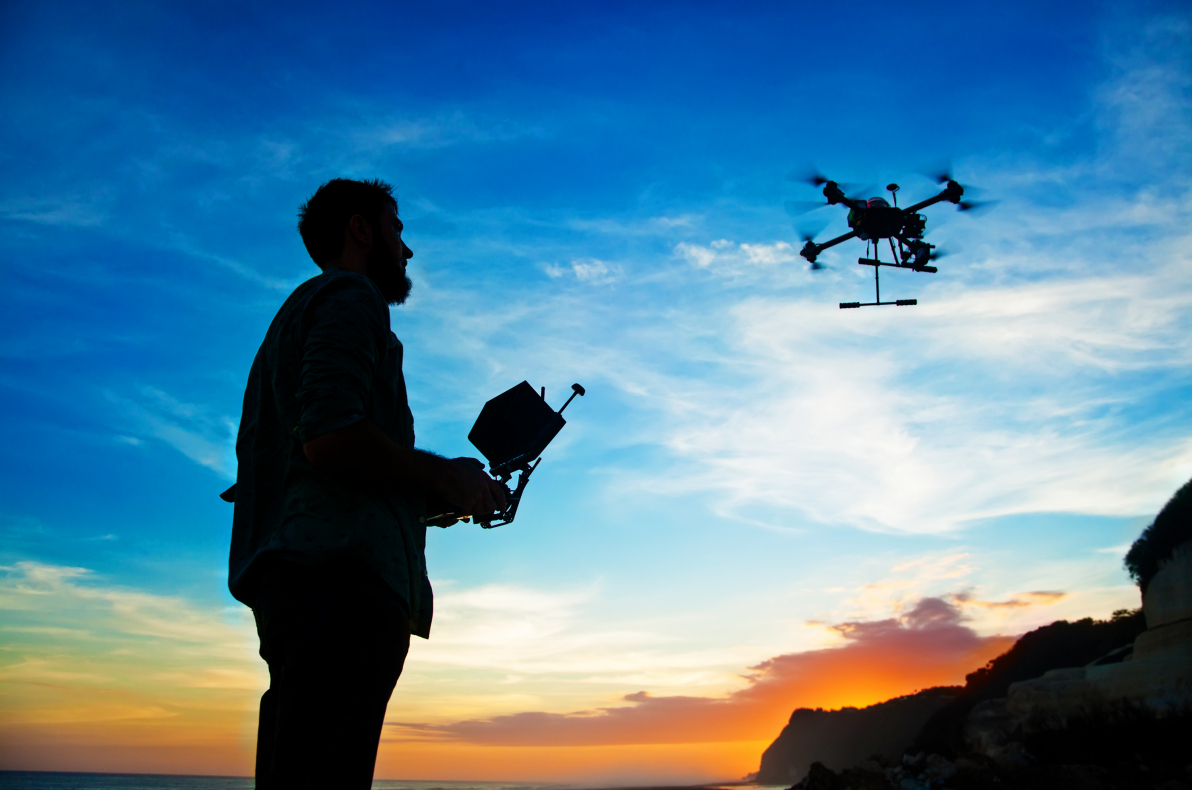The 3 Big Questions Restoration Pros Have About Drones

Drones are hard to ignore. It is estimated that North American sales of unmanned aerial systems (UAS) for commercial purposes will grow by 450 percent between 2016 and 2020.1 Millions of drones are in the sky largely because they’re now recognized as effective solutions for business. Skyward even reports that 92 percent of companies are getting a positive return on their drone investment within just one year.2 Drones are on the rise, but are they as great as they seem?
Let’s first examine where drone solutions fit in the restoration industry. Restoration pros have unique needs when it comes to gathering and analyzing data, and the everyday drone solution won’t cut it. Here are answers to the biggest questions you might have.
How Can the Restoration Industry Use Drones?
Until recently, drone technologies were expensive, highly specialized tools only practical for industries like mining and agriculture, but advances in technology have made them viable for dozens of industries ranging from insurance to roofing, solar and, yes, even restoration. Today, high-end consumer drones from a big box store can provide easy-to-use and affordable platforms for restoration-focused drone software.
For restoration, drone technologies are most useful as a damage analysis tool for properties and structure exteriors. Rather than manually measuring and gathering imagery, drones can fly over a damaged structure to help restoration pros get all the information they need. Capabilities vary from one solution to another, but more advanced drone solutions in the United States and Canada can provide detailed roof photos, along with measurements, three-dimensional models of the structure and property, and even AI-powered damage detection to make inspection and analysis incredibly simple.
What Are the Benefits of Drones for Restoration?
Drone solutions have a variety of benefits for the restoration industry, but the most compelling fall in the following categories:
Safety – Roofing is the most dangerous trade in construction when it comes to fatalities. In the U.S., over 80 percent of construction-related ER-treated injuries involve ladders,3 and, in Canada, ladder-related injuries in the construction sector continue to rise.4 A fall from even a low height can be fatal, and since drones eliminate the need for a ladder, they vastly improve safety. Outside of preventing ladder falls, drone technologies can also give restoration pros an eye in the sky to analyze severely damaged properties while staying away from hazards.
Efficiency – Drone solutions offer restoration pros a much quicker way to assess damage thanks to automated flight and damage detection that can identify things like hail hits in minutes without manual effort. In some cases, users can triple and even quadruple their inspection output using drone solutions.
Quality and Consistency – Many things can prevent a restoration inspector from gathering adequate, consistent information. A busy schedule might force an inspector to rush, which might mean they trade the quality of the information for more speed. Since some drone solutions follow automated flight plans, they can gather the same high-quality imagery on every structure and property, so data stays consistent across the board.
What Are the Challenges for Adopting Drones for Restoration?
While drone solutions are generally easy to adopt, there are some considerations for restoration pros thinking about getting started.
Overcoming Misconceptions – Many assume that drones are hard to fly and not worth the effort. Drones may seem intimidating, but users can fly more sophisticated drone solutions with minimal knowledge thanks to automated flight planning, obstacle avoidance sensors and other intuitive technologies. These days, flying isn’t just easy; it’s fun, too.
Selecting a Solution – You can certainly pick an off-the-shelf drone and start manually flying right now, but to fully unlock the potential of drone technology, it’s wise to look for solutions that automate image capture and provide measurements, models and artificial intelligence tools. Solutions like these make it easier for you to turn imagery into a clear understanding of what a restoration job will entail.
Part 107 Certification (U.S.) and TP 15263 Knowledge Requirements for Pilots of Unmanned Air Vehicle Systems (Canada) – The U.S. and Canada require all commercial drone pilots to hold a remote pilot certificate. Gaining this certificate is a relatively easy process that requires some study time and a test.
Drone Insurance – As with any vehicle, it’s wise to have liability insurance for your drone in the unlikely event that something goes wrong. Most major carriers or brokers have plans that will give you adequate coverage for your drone operations.
Conclusion
Given the array of benefits, it’s easy to see why drones are taking industry by storm. If there’s one piece of useful advice for restoration pros, it’s to start using drones immediately. Start the certification process. Get a solution and start seeing how it fits in your workflow. Drones have finally matured to the point of being a reliable and affordable way to improve how restoration professionals get their work done. If your drone program isn’t up and running quickly, you’ll soon fall behind.
Sam Margel is vice president of operations and regulatory affairs for Toronto-based Drone Software Canada Inc. (DSC), the leading drone automation software and analytics provider, especially for the property insurance and restoration industries. As the exclusive Canadian license distributor and service provider for Utah-based IMGING™ drone automation software, DSC is at the forefront of insurance-focused drone artificial intelligence, methods, analytics and Transport Canada regulatory compliance for the property insurance industry. DSC is privileged to hold a special Canada Nation-wide SFOC, which includes a unique Single Pilot Operations endorsement. In the U.S., please visit www.lovelandinnovations.com and in Canada please visit www.dronesoftwarecanada.com for more information.
Resources
1. https://www.faa.gov/news/updates/?newsId=85227
2. http://go.skyward.io/rs/902-SIU-382/images/2018 State of Drones.pdf
